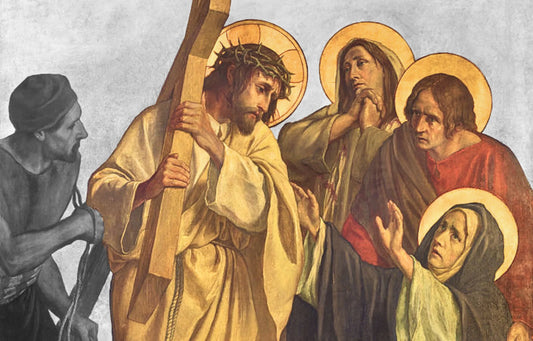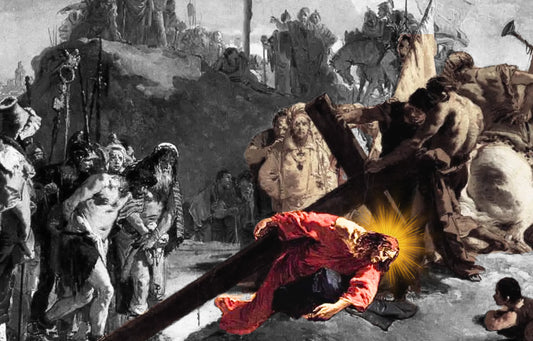In the Bible, the color orange symbolizes endurance, fire, and the presence of God. It blends red’s power with yellow’s joy, often reflecting purification, judgment, or divine energy. Though not directly named, orange hues appear in imagery like fire, sunsets, and precious stones (Ezekiel 1:4; Revelation 21:20). Learn how this vibrant color communicates deep spiritual truths across Scripture.
Is Orange Mentioned in the Bible?
The Absence of the Word but Not the Color
While the word "orange" never appears in the original Hebrew, Aramaic, or Greek texts, its essence is undeniably present. Ancient biblical languages had fewer distinct words for colors, often lumping multiple hues under umbrella terms like adom (red) or "yellow." Yet, the visual palette of Scripture includes blazing sunsets, fire, and glowing metals—all rich in orange tones.
The ancient world didn't name colors the same way we do today. In fact, linguistic studies show that languages tend to develop names for colors in a specific order—black and white, then red, then green or yellow, and orange typically comes much later (Berlin & Kay, 1969). So while unnamed, orange lived vibrantly in the biblical imagination.
Where Orange Appears Symbolically
Ezekiel 1:4 offers a thunderous visual: “a windstorm from the north… flashing lightning, surrounded by brilliant light. The center of the fire looked like glowing metal.” This vision is almost cinematic—vivid, radiant, and warm with amber light. It's the language of encounter.
In Revelation 21:20, the foundation stones of the New Jerusalem include jacinth and chrysolite—gemstones whose hues range from fiery orange to golden amber. These colors carry the weight of eternity, embedded in the architecture of God’s holy city.
Symbolism of Orange in Biblical Contexts
Fire and Divine Presence
Orange is most often linked to fire—and fire in the Bible is not just hot; it’s holy. Exodus 3:2 tells of the burning bush, where flame became the medium of God’s voice. This was not destructive fire but holy fire, a flame that beckoned rather than consumed.
At Pentecost (Acts 2:3), the Holy Spirit descended “like tongues of fire,” igniting the apostles’ speech and courage. While Scripture doesn’t give us a Pantone code, artists and theologians have long envisioned this moment in orange and gold—the colors of divine indwelling.
Orange becomes a shorthand for divine presence: it’s not the blinding white of transcendence, but the warm blaze that says, God is near.
Purification and Judgment
In Malachi 3:2–3, God is described as “a refiner’s fire.” Refining isn’t punishment—it’s transformation. Ancient metallurgists knew that gold and silver had to be heated until impurities rose to the surface. The furnace glows orange when the refining is real.
This is the fire that tests, not tortures. It separates the faithful from the false, the enduring from the fleeting. The color orange, in this case, is the color of holy calibration—God making His people fit for His presence.
Transition and Endurance
Orange stands between red and yellow—symbolically caught between sacrifice and glory. In biblical thought, it's the hue of becoming.
Romans 5:3–4 lays it out plainly: “suffering produces endurance, and endurance produces character, and character produces hope.” The journey from blood to light runs through fire. Orange is that in-between—a symbol of the middle ground where faith is tested, stretched, and matured.
Visually, orange is tied to the harvest. Autumn—the season of ripening and reward—is nature’s orange hour. In Scripture, harvest represents both judgment and fulfillment (Matthew 13:39, Revelation 14:15), and the glow of ripened grain mirrors the soul that’s endured the season.
Color Symbolism in Jewish and Early Christian Traditions
Tabernacle and Temple Colors
Exodus 26:1 gives us the temple’s divine design code: blue, purple, and scarlet. Orange isn’t listed, but it's there by implication—in the bronze altar, the perpetual flame, and the flicker of oil lamps.
The bronze altar, detailed in Exodus 27:1–8, was where sacrifices were offered. Bronze, when heated, takes on a molten-orange glow. It became a visual cue for cleansing, repentance, and the seriousness of sin.
Early Church Interpretations
The early Church Fathers didn't comment on orange specifically, but they had much to say about fire. Origen interpreted fire as God's pedagogy—a way of teaching and correcting. Gregory of Nyssa viewed divine fire as purifying, not punitive. Augustine famously described God as a light that “illumines the soul without burning the flesh.”
Their focus was less on pigment and more on presence—but their metaphors burn bright with orange undertones.
Gemstones, Metals, and Fiery Imagery
Fiery Gemstones in Revelation
The city of God in Revelation 21:19–20 gleams with stones of color and fire:
- Jacinth – A translucent orange-red stone, used in ancient Roman jewelry.
- Chrysolite – A golden-green gem known today as peridot, but once referred to any stone with yellow-orange sheen.
- Carnelian – A red-orange stone used in Near Eastern seals and priestly regalia.
In Exodus 28:17–20, these stones also appear on the High Priest’s breastplate, each representing a tribe of Israel. Their color signified value, identity, and spiritual authority. Orange stones weren’t decorative—they were declarative.
Bronze and Burnished Metal
Scripture frequently uses the image of burnished bronze to describe angelic or divine beings:
- Daniel 10:6 – “arms and legs like the gleam of burnished bronze”
- Revelation 1:15 – “feet like bronze glowing in a furnace”
This isn't ornamental imagery; it signals strength, judgment, and permanence. In ancient warfare, bronze weapons meant resilience. In worship, bronze altars meant seriousness. Spiritually, the glowing bronze of God’s messengers points to both divine judgment and unwavering stability.
Modern Christian Reflections on Orange
Spiritual Endurance
Today, Christian art and devotional writing often assign orange to spiritual grit—the kind of faith that doesn’t fade when tested. It's the post-battle glow of someone who didn’t give up.
Writers like A.W. Tozer and Oswald Chambers reference the refining fire as essential, not optional. Faith isn’t formed in the sunlight; it’s forged in the fire. And that fire glows orange.
Some connect this to Hebrews 12:29: “our God is a consuming fire.” This verse doesn’t speak of destruction, but divine thoroughness. The fire consumes what can’t endure—and what remains shines.
The Holy Spirit and Revival
During the Azusa Street Revival (1906–1915), witnesses often described spiritual experiences in terms of heat and light. That legacy continued in charismatic and Pentecostal imagery where the Holy Spirit’s presence is shown as warm, bright, and flame-like.
Though not officially tied to any one color, orange captures this energy—alive, igniting, and unstoppable. It's the color of holy combustion.
Psychological and Cultural Layers
Orange as Energy, Not Chaos
Modern color psychology sees orange as invigorating without overwhelming. It increases alertness, boosts mood, and sparks action (Elliot & Maier, 2012). This complements Scripture's portrayal of fire as activating—not numbing.
Enduring faith requires this kind of spiritual momentum—forward-moving, not stagnant. Orange visually embodies that.
Cross-Cultural Notes (Without Syncretism)
In Hindu and Buddhist traditions, orange robes denote renunciation and spiritual intensity. While Christianity doesn’t draw on these meanings, the global association of orange with serious spiritual pursuit is noteworthy.
The takeaway isn’t theological borrowing, but recognition: orange universally says something sacred is happening.
Key Verses That Visually Reflect Orange Themes
- Ezekiel 1:4 – Vision of fire and glowing metal
- Daniel 7:9 – Thrones ablaze with flames
- Malachi 3:2–3 – God as the refiner’s fire
- Acts 2:3 – Tongues of fire at Pentecost
- Revelation 1:15 – Bronze glowing in the furnace
- Revelation 21:20 – Fiery stones in the eternal city
Each of these verses builds a theological case for orange—not as an explicit term, but as a recurring image of transformation, power, and divine closeness.
Conclusion: Why Orange Matters Spiritually
Orange may go unnamed in Scripture, but its message is everywhere. It flickers in burning bushes and roars through prophetic visions. It radiates from heated altars and glimmers in eternal architecture.
It is the color of refining, not rejecting. Of enduring, not escaping. Of God coming close enough to burn away the unnecessary and leave only the eternal.
To recognize the biblical meaning of orange is to understand a God who meets us in fire—not to harm, but to make us holy.














